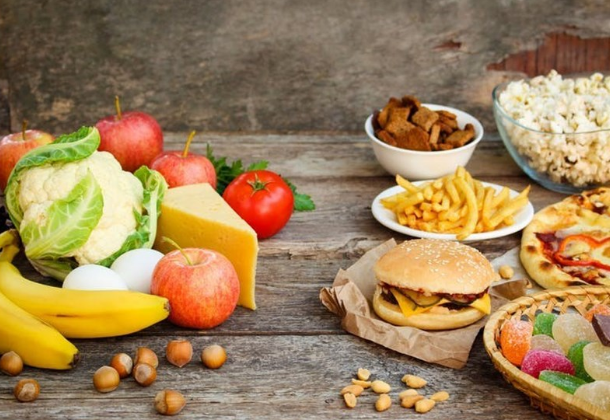[vc_row][vc_column][vc_column_text]Importance of good nutrition in children
In Malta, our children have one of the highest BMI in the world, after USA. Although there is plenty of information at our fingertips, it can be difficult to conclude what a balanced diet and healthy lifestyle would look like for your unique child. In order to implement a sustainable and healthy lifestyle for your child, it is important to understand what good nutrition consists of, how it can affect childhood development, and the steps you can take to ensure your child is on-board with the diet.
How nutrition affects children?
A proper nutritional diet and healthy lifestyle can affect young children throughout the rest of their lives. During early development, children are highly impressionable and start to implement routines and tools that they carry with them into adulthood. Aside from habits and routines created, children who do not obtain proper nutrients as they develop, can suffer from physical and medical conditions. Some of the most common issues for malnourished children include obesity, osteoporosis, decreased muscle mass, changes in hair volume and texture, fatigue, irritability, and type 2 diabetes.
Overweight and obesity are a growing epidemic affecting children at an alarming rate. Overweight and obesity refers when children have excess body fat. Children who do not have a well-balanced diet and consume high amounts of fat, sugar, and processed carbohydrates are at risk of obesity. Obesity can lead to several health problems that can affect children for the rest of their lives including high blood pressure, type 2 diabetes, elevated cholesterol and emotional problems. Young children are highly impressionable and can be subject to body shame and emotional issues linked to the food they consume.
The choices that children and parents make early on regarding nutrition and lifestyle can affect children for the rest of their lives. As most people reach their peak bone mass at age 20, it is important to build muscle and bone mass during the early stages of childhood. Children who are overweight tend to have fatigue and irritability that can lead to depression. Children that are overweight have difficulty with physical activity. This can cause emotional isolation and can set the groundwork for poor social interactions and low self-esteem. Overall, a well-balanced and healthy nutritional diet is of utmost importance in developing children.
What is the best nutrition?
Nutrition for children is based on the same core principles as nutrition for adults. The five main food groups include grains, dairy, protein, vegetables, and fruit, and are generally a good starting point for any diet. The portions of each respective food group will depend heavily on age, genetic makeup, and physical activity. In other words, all children can eat the same type of foods but with different portion sizes.
Grains: can be split into two categories: whole and refined grains. Whole grains are more nutritious because they contain more vitamins and minerals therefore, whole grains tend to be a better option. Some examples of refined grains include cereal, tortillas, white bread, and white rice.
Vegetables: can be raw, cooked, dehydrated, canned, whole, juiced, or mashed and are separated into 5 subcategories including dark-green vegetables, starchy vegetables, red and orange vegetables, beans and peas, and other vegetables. The portion size of each will depend on which subcategory it belongs to considering that some vegetables are more nutrient dense and nutrient packed than others.
Fruit: Fruit can be canned, frozen, dried, pureed, or juiced. Due to the high sugar content of fruit, it is advisable to construct a dietary balance based on age, activity levels, and gender.
Protein and diary: The protein food group is made up of foods that are primarily protein sources such as meat, poultry, beans, peas, eggs, seafood, and nuts. It is advisable that meat and poultry sources be lean and low fat. All fluid milk products and products made primarily from milk belong to the dairy food group. This includes items such a milk, yogurt, and cheese. In recent years, dairy has been a controversial member of the food group and as such, many nutritionally comparable dairy alternatives have been provided with greater nutritional value. As such, this group also contains fortified dairy-alternative products such as soy, almond, and cashew milk and nut cheeses.
Lack of calcium absorption can lead to osteoporosis. Osteoporosis is a degenerative bone disease that results in porous, weak, and brittle bones. Contrary to popular belief, Calcium is not best obtained through traditional dairy milk. This is because the calcium provided in dairy milk is less bioavailable to developing bodies. It is best to obtain calcium through dark leafy greens like kale and broccoli.
Ideally, children start their day with breakfast in the morning, lunch at around lunchtime and dinner in the evening. Healthy snacks should also be included in between meals. These may vary according to the level of physical activities and any medical conditions such as waking up with heart burn, obesity, diabetes, picky eating, etc.
In conclusion, research shows that it is best to avoid battles over food and meals. Ideally, parents provide regular snacks and meals. Children can be picky and, at times, avoidant or inflexible. If your young child refuses certain foods, it is best to let it go and try again at another time. Chances are, they will start to warm up to the options provided. As previously mentioned, young children are developing their independence and opinions and, as such, they are subject to vary.
Based on the age and unique genetic makeup of your child, their diet and lifestyle may look different and have emphasis on certain nutritional guidelines during one age range and much different guidelines during another. If, in doubt about your child’s diet always seek professional advice from a dietitian.[/vc_column_text][/vc_column][/vc_row]




